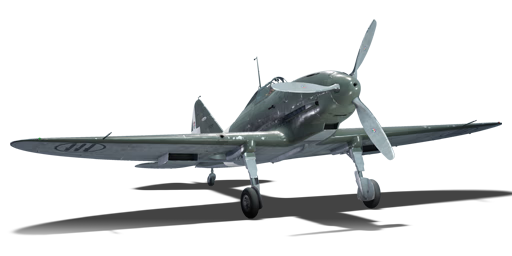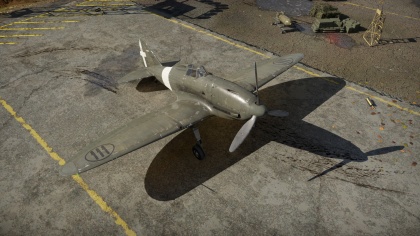Difference between revisions of "Re.2001 serie 1"
(Updated template w/ new design, Removed unnecessary codes, Added history section from devblog) |
(Edits.) |
||
| Line 38: | Line 38: | ||
== History == | == History == | ||
<!--''Describe the history of the creation and combat usage of the aircraft in more detail than in the introduction. If the historical reference turns out to be too big, take it to a separate article, taking a link to an article about the vehicle and adding a block "/ History" (example: <nowiki>https://wiki.warthunder.com/(Vehicle-name)/History</nowiki>) and add a link to it here using the <code>main</code> template. Be sure to reference text and sources by using <code><nowiki><ref></nowiki></code>, as well as adding them at the end of the article.''--> | <!--''Describe the history of the creation and combat usage of the aircraft in more detail than in the introduction. If the historical reference turns out to be too big, take it to a separate article, taking a link to an article about the vehicle and adding a block "/ History" (example: <nowiki>https://wiki.warthunder.com/(Vehicle-name)/History</nowiki>) and add a link to it here using the <code>main</code> template. Be sure to reference text and sources by using <code><nowiki><ref></nowiki></code>, as well as adding them at the end of the article.''--> | ||
| − | Entering the Italian Royal Air Force contest to design a new fighter with a radial engine and large- | + | Entering the Italian Royal Air Force contest to design a new fighter with a radial engine and large-calibre armament was a new experience for Reggiane. This Italian engineering company had previously only worked on large bombers. However, engineers Roberto Longhi and Antonio Alessio were confident that they could bring something new to the table. The construction of the monoplane fighter they designed for the contest was made from aluminium alloy and inspired by the American Seversky P-35 project. The Re.2000, as its creators called it, underwent extensive testing at the end of the summer in 1939. The fighter demonstrated superb flight and speed qualities compared to the other contest entries. When pitted against the Bf 109 E, the landmark German fighter of its time, the Re.2000 proved more manoeuvrable. Surprisingly, the metal monoplane even outflew the agile Fiat CR.42 biplane in testing! However, the Re.2000 ultimately lost the contest for serial production for the Italian air force – testing revealed leakage problems in the fuel tanks. Foreign customers expressed keen interest in the aircraft – the British ordered 300 units for the RAF (of course, the order was cancelled when Italy joined the war), and Finland, Yugoslavia, Switzerland, and Portugal were also interested. Sweden purchased 60 units of the model and Hungary purchased 70 units and a production license (the Hungarian versions were given the designation “Héja”). The design of the first Re.2000 fighter series was the basis for future developments at Reggiane, being more successful than its ill-fated predecessor. |
''- From [https://warthunder.com/en/news/5373-development-re-2000-the-italian-falcon-en Devblog]'' | ''- From [https://warthunder.com/en/news/5373-development-re-2000-the-italian-falcon-en Devblog]'' | ||
Revision as of 14:49, 19 March 2019
Contents
| This page is about the aircraft Re.2001 serie 1. For other uses, see Re.2001 (Disambiguation) |
Description
The Re.2001 serie 1 is a Rank Italian fighter
with a battle rating of (AB), (RB), and (SB). It was introduced in Update 1.85 "Supersonic".
General info
Flight Performance
Describe how the aircraft behaves in the air. Maximum speed, manoeuvrability, speed and allowable loads - these are the most important characteristics of the vehicle.
Survivability and armour
Examine the survivability of the aircraft. Note how vulnerable the structure is and how secure the pilot is, whether the fuel tanks are armoured. Describe the armour, if there is any, also mention the vulnerability of other critical aircraft systems.
Armaments
Offensive armament
Describe the offensive armament of the aircraft, if any. Describe how effective the cannons and machine guns are in a battle, and also what belts or drums are better to use. If there is no offensive weaponry, delete this subsection.
Suspended armament
Describe the aircraft's suspended armament: additional cannons under the wings, bombs, rockets and torpedoes. This section is especially important for bombers and attackers. If there is no suspended weaponry remove this subsection.
Defensive armament
Defensive armament with turret machine guns or cannons, crewed by gunners. Examine the number of gunners and what belts or drums are better to use. If defensive weaponry is not available remove this subsection.
Usage in battles
Describe the tactics of playing in an aircraft, the features of using vehicles in a team and advice on tactics. Refrain from creating a "guide" - do not impose a single point of view, but give the reader food for thought. Examine the most dangerous enemies and give recommendations on fighting them. If necessary, note the specifics of the game in different modes (AB, RB, SB).
Pros and cons
Summarize and briefly evaluate the vehicle in terms of its characteristics and combat effectiveness. Mark its pros and cons in the bulleted list. Try not to use more than 6 points for each of the characteristics. Avoid using categorical definitions such as "bad", "good" and the like - they have a substitution in the form of softer "inadequate", "effective".
Pros:
Cons:
History
Entering the Italian Royal Air Force contest to design a new fighter with a radial engine and large-calibre armament was a new experience for Reggiane. This Italian engineering company had previously only worked on large bombers. However, engineers Roberto Longhi and Antonio Alessio were confident that they could bring something new to the table. The construction of the monoplane fighter they designed for the contest was made from aluminium alloy and inspired by the American Seversky P-35 project. The Re.2000, as its creators called it, underwent extensive testing at the end of the summer in 1939. The fighter demonstrated superb flight and speed qualities compared to the other contest entries. When pitted against the Bf 109 E, the landmark German fighter of its time, the Re.2000 proved more manoeuvrable. Surprisingly, the metal monoplane even outflew the agile Fiat CR.42 biplane in testing! However, the Re.2000 ultimately lost the contest for serial production for the Italian air force – testing revealed leakage problems in the fuel tanks. Foreign customers expressed keen interest in the aircraft – the British ordered 300 units for the RAF (of course, the order was cancelled when Italy joined the war), and Finland, Yugoslavia, Switzerland, and Portugal were also interested. Sweden purchased 60 units of the model and Hungary purchased 70 units and a production license (the Hungarian versions were given the designation “Héja”). The design of the first Re.2000 fighter series was the basis for future developments at Reggiane, being more successful than its ill-fated predecessor.
- From Devblog
Media
An excellent addition to the article will be video guides, as well as screenshots from the game and photos.
See also
Links to the articles on the War Thunder Wiki that you think will be useful for the reader, for example:
- reference to the series of the aircraft;
- links to approximate analogues of other nations and research trees.
External links
| Italy fighters | |
|---|---|
| Fiat | CR.32 · CR.32 bis · CR.32 quater · CR.42 · Marcolin's C.R.42 CN |
| G.50 serie 2 · G.50 AS serie 7 | |
| G.55 sottoserie 0 · G.55 serie 1 · G.55S · G.56 | |
| Reggiane | Re.2000 G.A. · Re.2000 serie 1 |
| Re.2001 serie 1 · Re.2001 gruppo 22 · Re.2001 CB · Re.2001 CN | |
| Re.2002 Early | |
| Re.2005 serie 0 | |
| Macchi | C. 200 serie 3 · C. 200 serie 7 |
| C. 202 · C. 202D · C. 202EC | |
| C. 205 serie 1 · C. 205 serie 3 · C. 205N2 | |
| IMAM | Ro.44 |
| Foreign: | |
| Germany | ▄Bf 109 G-14/AS |
| USA | ▄P-47D-30 |
| Britain | ▄Spitfire Mk Vb/trop |
| Hungary | ◐Bf 109 F-4 · ◐Bf 109 G-2 · ◔Yak-9P |
| Romania | He 112 B-1/U2 · IAR-81C |





